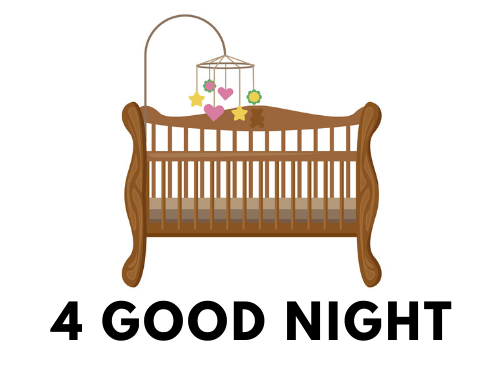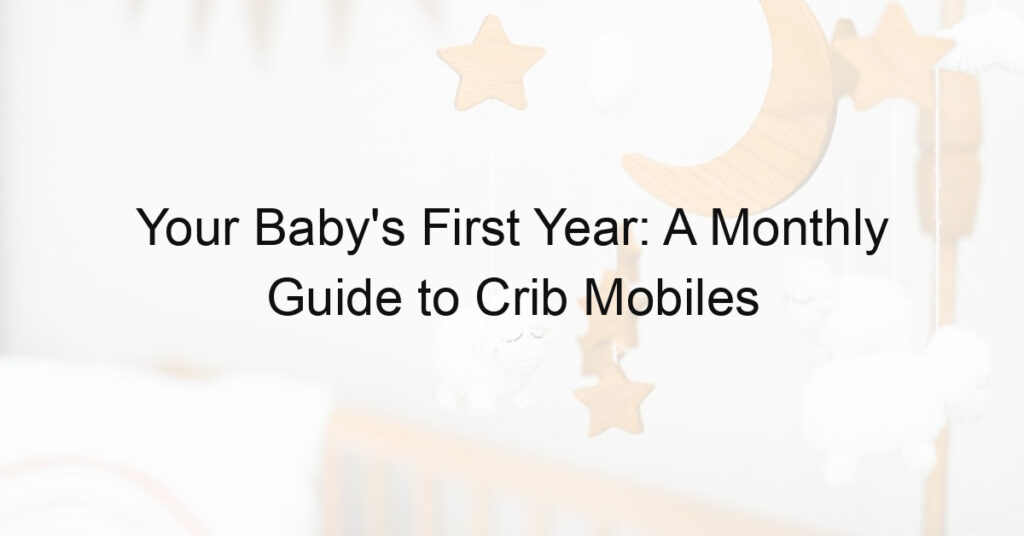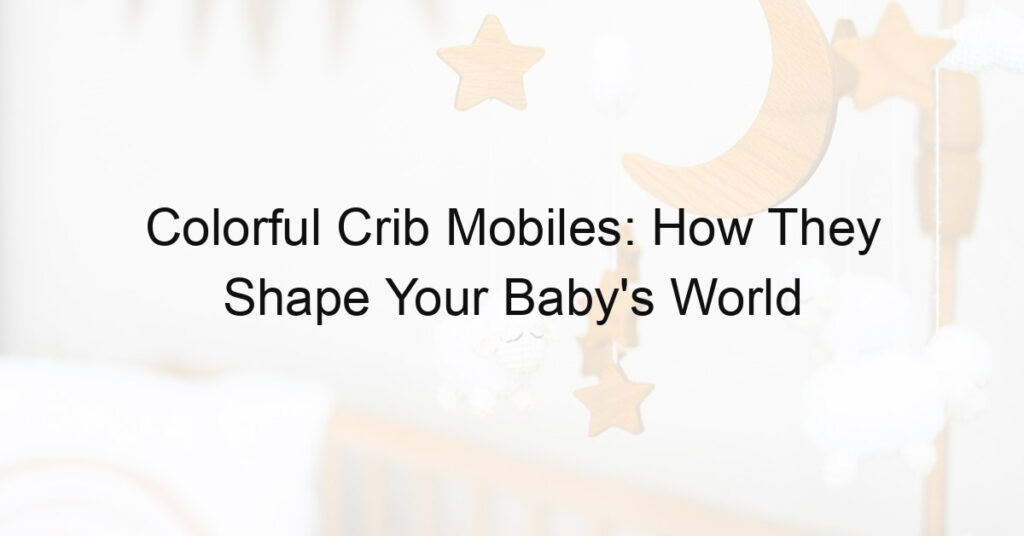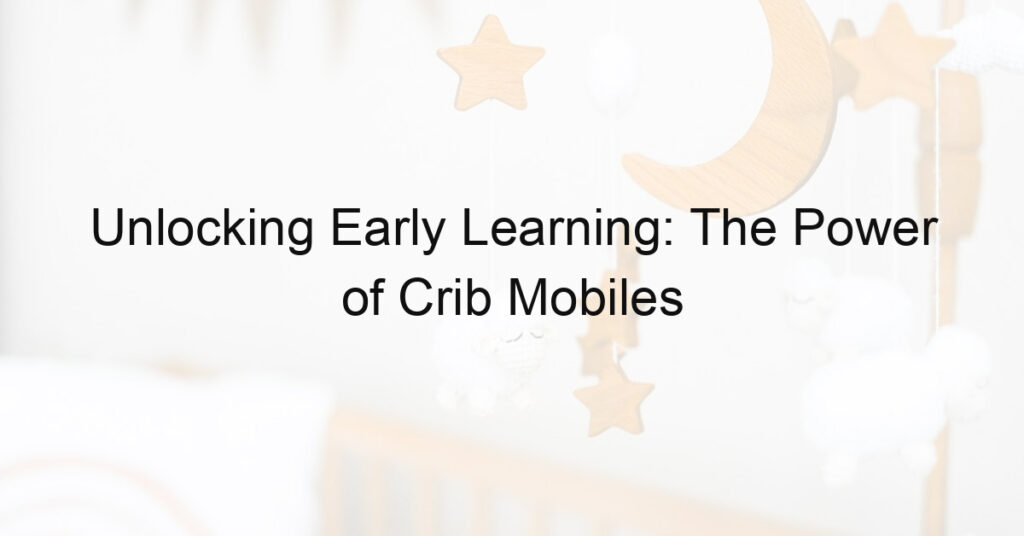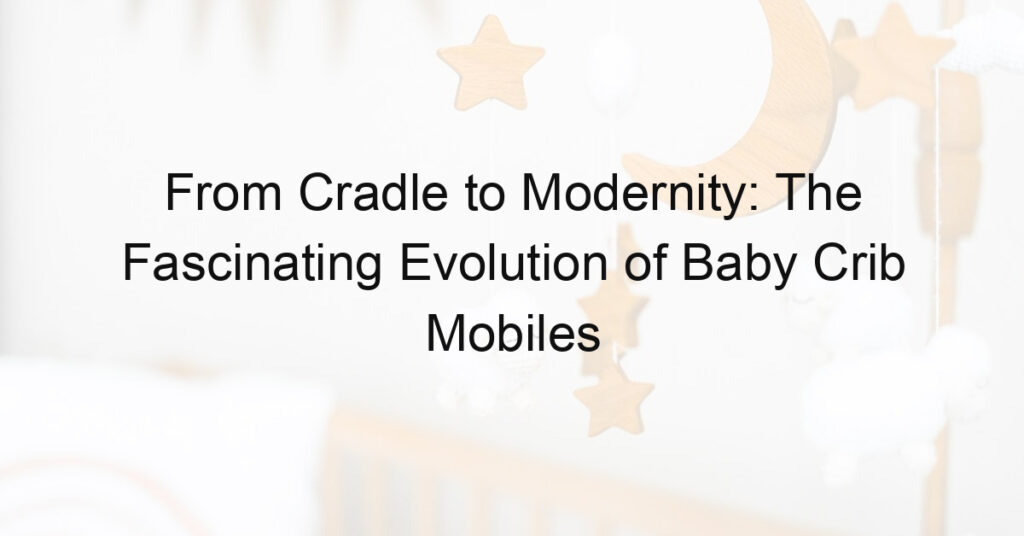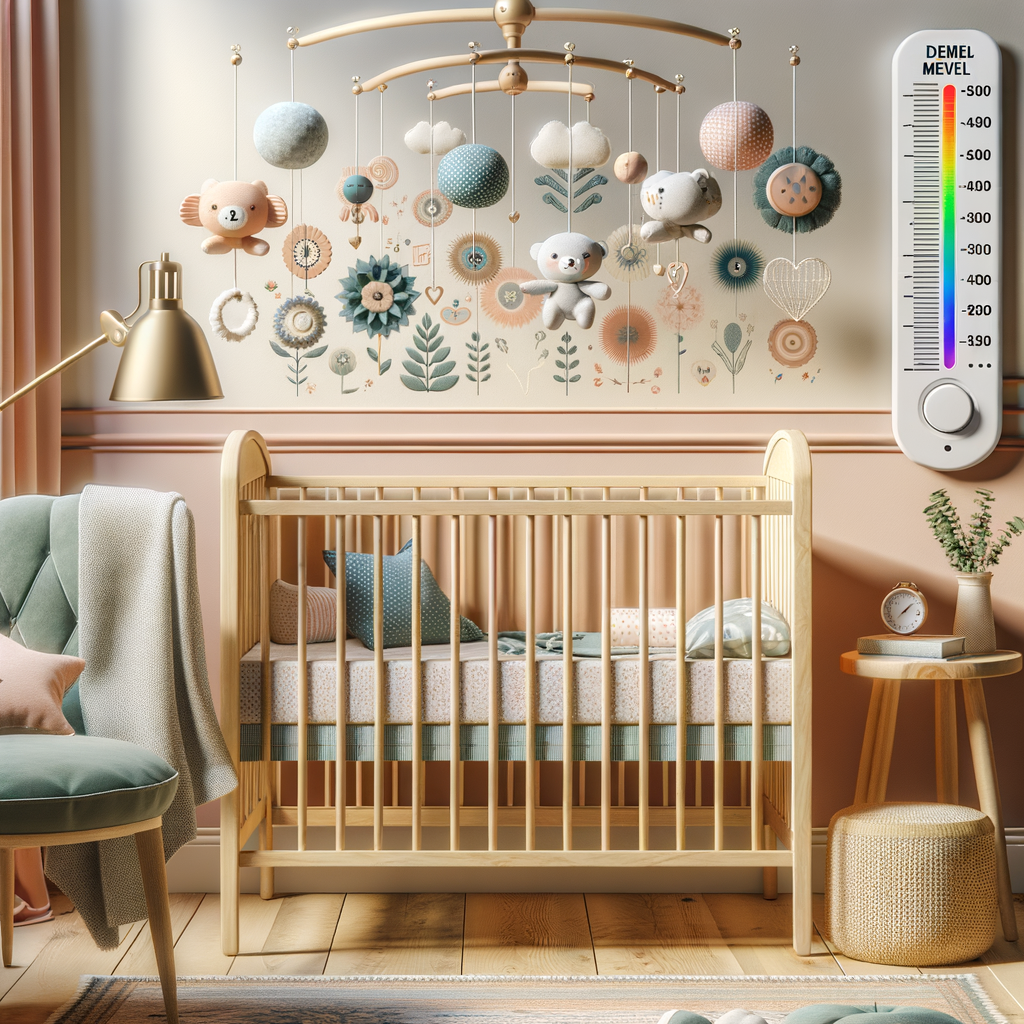
Introduction to Baby Sleep Safety
As a parent, ensuring your baby’s safety is a top priority, especially when it comes to sleep. This section will help you understand the importance of baby sleep safety and common concerns that parents often have.
- Importance of Baby Sleep Safety
- Common Safety Concerns for Parents
- Bed-sharing: While it may seem comforting to share a bed with your baby, it can be dangerous. Babies can suffocate if a parent accidentally rolls over them or if they get trapped between the mattress and the wall.
- Use of blankets and pillows: Soft bedding can pose a suffocation risk for babies. It’s best to keep the crib free of blankets, pillows, and stuffed animals.
- Baby’s sleep position: Babies should always be placed on their backs to sleep. This position reduces the risk of SIDS.
Ensuring your baby’s sleep safety is crucial for several reasons. First, it helps prevent Sudden Infant Death Syndrome (SIDS), which is the leading cause of death in infants aged one month to one year. According to the American SIDS Institute, approximately 2,500 infants die from SIDS each year in the U.S. alone. By following safe sleep guidelines, you can significantly reduce your baby’s risk.
Second, proper sleep safety can also prevent injuries. Babies can easily roll over and get stuck in unsafe positions, leading to suffocation or choking. Therefore, it’s essential to create a safe sleep environment for your baby.
Many parents have concerns about their baby’s sleep safety. Some of the most common concerns include:
Understanding these concerns can help you take the necessary steps to ensure your baby’s safety during sleep.
Understanding Baby Crib Mobiles
When it comes to creating a nurturing environment for your little one, baby crib mobiles play a significant role. Let’s delve into what these are and the different types available.
What are Baby Crib Mobiles?
Baby crib mobiles are more than just decorative pieces. They are designed to capture and stimulate your baby’s attention and imagination. Let’s break down what they are and the different types you can choose from.
- Definition of baby crib mobiles: A baby crib mobile is a structure that hangs over the baby’s crib, often featuring colorful objects, animals, or shapes that rotate and sometimes play music. These moving and visually stimulating elements can help soothe your baby, stimulate their senses, and promote their cognitive development.
- Types of crib mobiles: There are various types of crib mobiles, each offering unique features. Some of the most common types include:
- Musical crib mobiles: These mobiles play soft melodies that can help soothe your baby to sleep.
- Light-up crib mobiles: These mobiles feature lights that can project images onto the ceiling, creating a mesmerizing effect for your baby.
- Wind-up crib mobiles: These mobiles are manually wound up and rotate slowly, providing visual stimulation for your baby.
- Battery-operated crib mobiles: These mobiles offer a range of features, including rotation, music, and lights, all powered by batteries.
Choosing the right type of crib mobile depends on your baby’s needs and your personal preferences. Regardless of the type, a crib mobile is a valuable addition to your baby’s crib that can provide both entertainment and developmental benefits.
Benefits of Baby Crib Mobiles
When it comes to enhancing your baby’s nursery, a crib mobile is more than just a decorative accessory. It offers numerous benefits that contribute to your little one’s development and well-being. Let’s delve into the key advantages of baby crib mobiles.
- Developmental Benefits
One of the significant benefits of crib mobiles is their role in promoting your baby’s developmental growth. Here’s how:
- Visual Stimulation: The colorful and moving objects in a crib mobile can help stimulate your baby’s eyesight. It encourages them to focus on individual items, improving their tracking skills.
- Motor Skills: As your baby grows, they will try to reach out for the hanging objects, fostering their hand-eye coordination and fine motor skills.
- Cognitive Development: The repetitive motion of the mobile’s objects can aid in your baby’s cognitive development, enhancing their understanding of cause and effect.
- Role in Soothing and Entertaining Babies
Beyond developmental benefits, crib mobiles also play a crucial role in soothing and entertaining your baby.
- Calming Effect: Many crib mobiles come with built-in music or white noise, which can have a calming effect on babies. This can be particularly helpful during nap times or when your baby is fussy.
- Entertainment: The movement of the mobile’s objects can keep your baby entertained when they’re awake. This can provide you with a few moments of respite while ensuring your baby is engaged in a safe activity.
In conclusion, a baby crib mobile is a valuable addition to your baby’s nursery. It not only adds aesthetic appeal but also contributes significantly to your baby’s development and comfort. However, it’s essential to ensure the mobile is installed correctly and removed at the appropriate time for your baby’s safety.
Crib Mobile Safety
Ensuring the safety of your baby is paramount, and this includes the proper use and installation of crib mobiles. Let’s delve into the key aspects of crib mobile safety.
- Proper Installation of Crib Mobiles
The first step towards crib mobile safety is proper installation. Incorrectly installed mobiles can pose a risk of falling onto the baby, causing injury. Here’s how to install a crib mobile safely:
- Height: The mobile should be installed high enough so that the baby cannot reach it. A good rule of thumb is to keep it at least 12 inches above the baby’s reach.
- Securely fasten: Ensure that the mobile is securely fastened to the crib. This prevents it from falling into the crib.
- Check regularly: Regularly check the mobile to ensure it is still secure. Over time, the mobile may become loose and could fall into the crib.
- When to Remove the Crib Mobile
As your baby grows and becomes more mobile, it’s important to know when to remove the crib mobile. A mobile is no longer safe when your baby can push up on their hands and knees or when they reach 5 months of age, whichever comes first. This is because they could potentially pull the mobile down, causing injury. Always prioritize your baby’s safety and remove the mobile at the appropriate time.
In conclusion, crib mobile safety is a crucial aspect of ensuring your baby’s wellbeing. By properly installing the mobile and knowing when to remove it, you can provide a safe and stimulating environment for your baby.
Safe Noise Levels for Babies
As parents, we always want to ensure the safety and well-being of our babies. One aspect that is often overlooked is the noise level in our baby’s environment. Let’s delve into understanding noise levels and their impact on a baby’s health.
Understanding Noise Levels
Noise levels are an important factor to consider in a baby’s environment. They are measured in units called decibels (dB). The higher the decibel level, the louder the noise. But what does this mean for your baby’s health?
- How noise levels are measured
- Effects of noise on baby’s health
Noise levels are measured using a device called a sound level meter. This device measures the pressure level of sound waves in the air and converts it into decibels. For example, a quiet room at night is typically around 30 dB, while a conversation at home is about 50 dB. Loud noises, like a vacuum cleaner or a busy street, can reach up to 70-80 dB.
Exposure to high noise levels can have a negative impact on a baby’s health. It can disrupt their sleep, cause stress, and even lead to hearing loss in severe cases. According to the World Health Organization, babies should not be exposed to noise levels above 50 dB for prolonged periods. It’s important to monitor and control the noise level in your baby’s environment to ensure their well-being.
Understanding and controlling noise levels in your baby’s environment is a crucial part of ensuring their safety and health. In the next section, we will discuss the recommended noise levels for a baby’s room and provide tips on how to control these levels.
Safe Noise Levels for Baby’s Room
Creating a safe and comfortable environment for your baby is crucial. One aspect that often gets overlooked is the noise level in the baby’s room. Let’s explore the recommended noise levels and how to control them.
- Recommended Noise Levels for Baby’s Room
According to the World Health Organization, the safe noise level for a baby’s room is under 50 decibels. This is roughly the sound level of a quiet, calm conversation. It’s important to note that babies have sensitive hearing. Loud noises can startle them, disrupt their sleep, and even impact their hearing development.
| Noise Source | Approximate Decibel Level |
|---|---|
| Whisper | 30 dB |
| Normal conversation | 60 dB |
| Busy traffic | 70-85 dB |
| Motorcycle | 95-100 dB |
As you can see, even a normal conversation can exceed the recommended noise level for a baby’s room. Therefore, it’s essential to monitor and control the noise level in your baby’s room.
- How to Control Noise Levels in Baby’s Room
Controlling the noise level in your baby’s room can be achieved in several ways. Here are a few tips:
- Use a Sound Machine: A sound machine can help mask disruptive noises. Choose one with a volume control so you can keep the noise level safe.
- Insulate the Room: Using sound-absorbing materials like heavy curtains or carpet can help reduce noise.
- Monitor the Noise: Consider using a decibel meter to monitor the noise level in the room. There are also smartphone apps available that can measure noise levels.
Remember, creating a quiet environment is not just about ensuring your baby’s comfort. It’s also about protecting their hearing and promoting healthy sleep patterns.
Best Crib Mobiles for Babies
Choosing the best crib mobile for your baby can be a daunting task. There are so many factors to consider and a wide range of products to choose from. In this section, we will guide you through the process and even provide you with our top five picks for the best crib mobiles for babies.
- Factors to Consider When Buying Crib Mobiles
- Safety: The mobile should be securely attached to the crib and out of your baby’s reach to prevent any accidents.
- Visual Stimulation: Bright colors and contrasting patterns can help stimulate your baby’s developing vision.
- Sound: Some mobiles come with built-in music or sound effects. Soft, soothing sounds can help lull your baby to sleep.
- Quality: Look for mobiles made from durable, non-toxic materials that can withstand a baby’s curiosity and activity.
- Top 5 Crib Mobiles for Babies
When shopping for a crib mobile, it’s important to consider several factors to ensure you’re making the best choice for your baby’s safety and development. Here are some key factors to keep in mind:
After considering the factors above, we’ve compiled a list of the top five crib mobiles that are not only safe but also engaging for your baby:
| Rank | Product Name | Key Features |
|---|---|---|
| 1 | Mobile A | Colorful, musical, easy to install |
| 2 | Mobile B | Soft sounds, durable, non-toxic materials |
| 3 | Mobile C | Interactive, stimulating patterns, secure attachment |
| 4 | Mobile D | High-quality, visually appealing, safe design |
| 5 | Mobile E | Engaging, soothing sounds, easy to clean |
Remember, the best crib mobile for your baby is one that is safe, stimulating, and fits well with your nursery decor. Happy shopping!
Baby Room Safety Tips
Ensuring your baby’s room is safe is one of the most important tasks you have as a parent. Here are some tips to help you create a safe environment for your little one.
- Creating a Safe Sleeping Environment
- Make sure the crib or bassinet meets current safety standards. It should have a firm mattress and a tight-fitting sheet.
- Keep the crib free of pillows, blankets, and stuffed animals to prevent suffocation.
- Always place your baby on their back to sleep. This reduces the risk of Sudden Infant Death Syndrome (SIDS).
- Ensure the room temperature is comfortable – not too hot or too cold.
- Choosing Safe Baby Toys
- Choose toys that are age-appropriate. Toys meant for older children may have small parts that are choking hazards.
- Avoid toys with sharp edges or points.
- Ensure toys are non-toxic. Look for labels that say “BPA-free” or “phthalate-free”.
- Regularly inspect toys for damage. Broken toys can have sharp edges or small parts that can be swallowed.
- General Baby Room Safety Tips
- Secure furniture to the wall to prevent it from tipping over.
- Keep small objects, cleaning supplies, and medications out of baby’s reach.
- Use safety gates at the top and bottom of stairs.
- Install window guards and keep crib away from windows to prevent falls.
- Use plug covers on all unused electrical outlets.
When it comes to your baby’s sleep, safety should be your top priority. Here are some tips:
Choosing safe toys for your baby is crucial to prevent accidents. Here are some guidelines:
Here are some general safety tips to keep in mind:
Remember, safety is a continuous process. Regularly check your baby’s room for potential hazards and address them promptly. Your little one’s safety is worth every effort.
Conclusion: Ensuring Baby’s Safety and Health
As we wrap up this comprehensive guide on baby safety, it’s crucial to remember that your baby’s safety and health are paramount. Let’s recap some of the key takeaways and highlight the importance of continuous learning about baby safety.
- Recap of key takeaways
- Importance of continuous learning about baby safety
Firstly, we learned about the importance of baby sleep safety. It’s essential to ensure that the crib is safe and that the baby crib mobiles are at a safe distance from your baby. We also discussed the safe noise levels for babies, emphasizing that loud noises can be harmful to your baby’s hearing.
Moreover, we explored some of the best crib mobiles for babies, focusing on their safety features and benefits. Lastly, we shared some practical baby room safety tips, such as securing furniture and using cordless window coverings.
Keeping your baby safe is a continuous process. As your baby grows and develops, so do the potential safety hazards. Therefore, it’s crucial to stay informed and up-to-date about baby safety. This includes reading the latest research, attending parenting classes, and speaking with healthcare professionals.
Remember, the safety of your baby is a journey, not a destination. It’s about making small, consistent efforts every day to create a safe and healthy environment for your little one.
In conclusion, baby safety is a broad and complex topic, but with the right knowledge and resources, you can ensure your baby’s safety and health. Always remember, the safety and well-being of your baby is your responsibility. So, keep learning, stay vigilant, and most importantly, enjoy the beautiful journey of parenthood.
